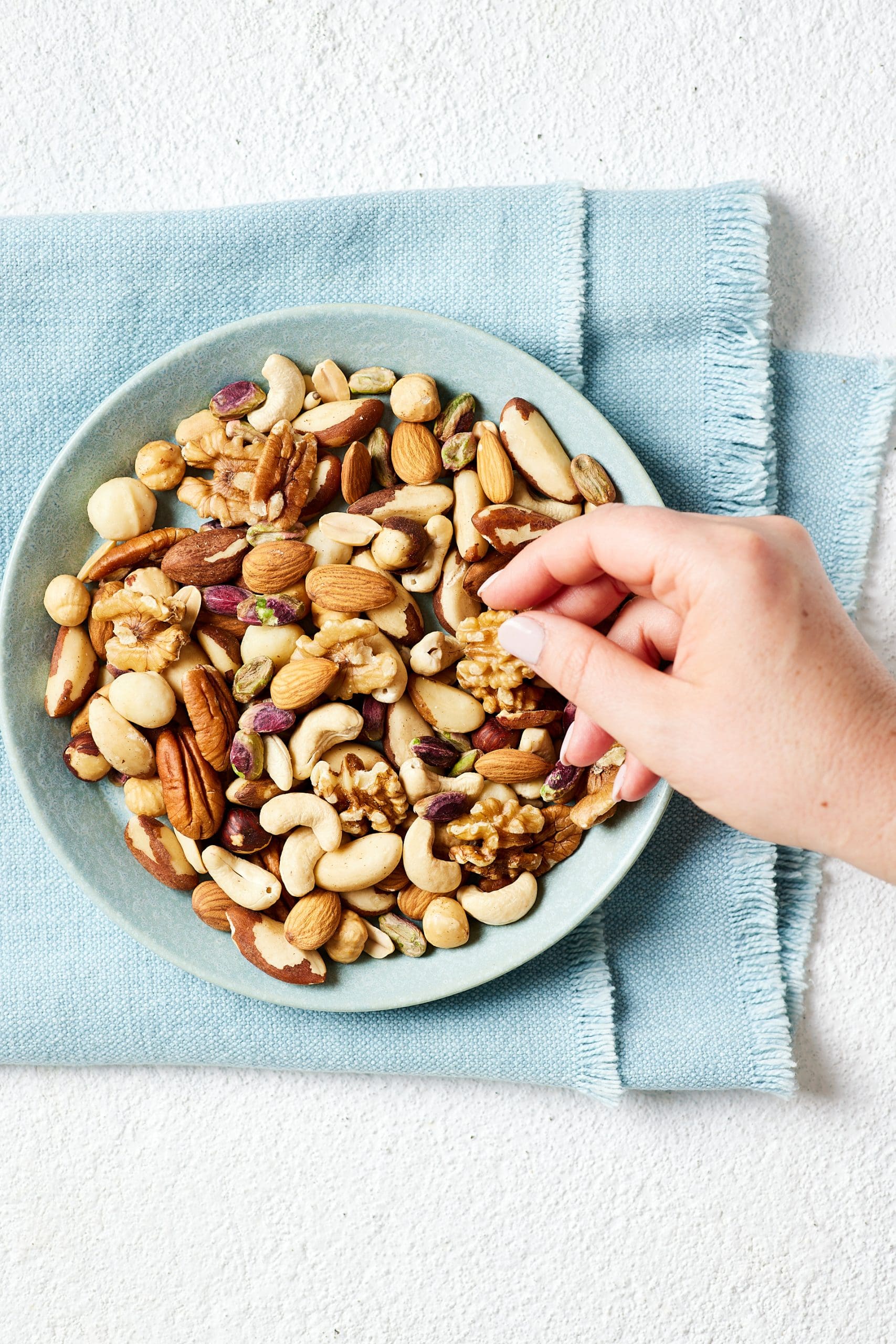New study supports better recognition of nuts within the Health Star Rating system

New study supports better recognition of nuts within the Health Star Rating system
Minor changes to the way Australia’s Health Star Rating (HSR) is calculated for nuts would ensure it better aligns with evidence on the health benefits of nuts, and could help more Australians meet nut intake targets, says new research (1).
The study, published in the journal Nutrients, calls for refinements to the HSR algorithm to better account for the nutritional features of nuts (and seeds).
The current HSR algorithm, adopted in 2014, inadvertently penalises nuts – a core food within healthy dietary patterns (2) – with ‘negative points’ due to their inherent energy and saturated fat content.
However, convincing evidence shows that the energy (kilojoule) density of nuts is not associated with weight gain (3). And their saturated fat content (less than 15% of the total fat in nuts) is offset by a much higher proportion of health-promoting unsaturated fats (4).
Did you know? Most Australians need to eat more nuts to reap their health benefits (5). Just 2% eat 30g (or a handful) of nuts a day, with the average intake less than 5g/day (6).
About the research
The study looked at how the current HSR rates a sample of 82 nuts, seeds and products containing them, and tested three hypothetical scenarios for adjusting the HSR algorithm:
- S1: Discounting energy from nuts and seeds
- S2: Discounting saturated fats from nuts and seeds, and
- S3: Treating foods with ≥50% nuts and seeds similarly to the ‘oils and spreads’ category in the original HSR.
Did you know? The HSR is based on an algorithm that considers nutrients to limit, including energy, saturated fat, sodium and sugar, and components to encourage, such as dietary fibre, protein and fruits, vegetables, legumes, and nuts. The resulting score is then translated into stars (from 0.5 to 5).
What did the study find?
Compared with the current HSR, all the scenarios improved the HSR score – thereby better reflecting the nutritional value of nuts and seeds.
Overall, 79%, 87% and 48% of products improved their score by at least one rating point in scenarios S1, S2 and S3, respectively, when compared to the original HSR.
Slight adjustments in the HSR algorithm would help ensure it’s consistent with both the latest scientific literature and the evolutions within dietary guidelines (1).
All the tested scenarios resulted in all plain (unsalted/unflavoured) nuts (and seeds) being awarded 5 stars – recognising them as among the healthiest of foods.
This is significant as, under the current HSR system, some nuts receive a 5-star rating, while others are rated as 4 or 4.5 stars. This discrepancy is confusing, given nuts cannot be reformulated, and food-based dietary guidelines do not distinguish between different nut varieties.
All plain nuts should receive a 5-star rating, conveying a much clearer message to consumers (1).
The results also showed that products with more than 50% of their weight comprising nuts and seeds benefit much more from these adjustments than those below 50%, avoiding undesirable rewards for products with a lower nut and seed content.
Finally, the analysis showed that the modelled adjustments made to the HSR algorithm did not impact food products not containing nuts.
A strength of these scenarios is that they maintain the fundamentals of the HSR algorithm, and could easily be implemented, say the study authors.
Did you know? Economic modelling has shown that increasing nut consumption among Australians from the current intake of 4.6g to 30g per day has the potential to reduce health care expenditure in Australia by at least $980 million per year (7).
Nutrition labelling under review in Australia
Food Standards Australia New Zealand (FSANZ) commenced a review of nutrition labelling, including the HSR and Nutrition Information Panel (NIP), late last year.
It seeks to improve Australian’s use, understanding and trust in the HSR system and the NIP, and strengthen the way the two labelling tools complement one another.
The review will help inform food ministers’ decision-making about the future of the HSR.
References
- Braesco V, Maillot M, Becqueriaux L, Grafenauer S. Improved recognition of the nutrition and health benefits of nuts and seeds within the Health Star Rating System. Nutrients, 2025; 17(7):1195. https://doi.org/10.3390/nu17071195
- National Health and Medical Research Council. Australian Dietary Guidelines; National Health and Medical Research Council: Canberra, Australia, 2013.
- Nishi, SK., et al. Are fatty nuts a weighty concern? A systematic review and meta-analysis and dose-response meta-regression of prospective cohorts and randomized controlled trials. Obes Rev, 2021. 22, e13330.
- Food Standards Australia New Zealand. Australian Food Composition Database. Available online: https://www.foodstandards.gov.au/science-data/monitoringnutrients/afcd (Accessed 10 April 2025).
- Balakrishna, R., et al. Consumption of nuts and seeds and health outcomes including cardiovascular disease, diabetes and metabolic disease, cancer, and mortality: An Umbrella Review. Adv. Nutr, 2022. 13: 2136–48.
- Nikodijevic, CJ., et al. Nut consumption in a representative survey of Australians: A secondary analysis of the 2011-2012 National Nutrition and Physical Activity Survey. Public Health Nutr, 2020. 23:3368–78.
- KPMG, as commissioned by Nuts for Life. The health and economic impact of increased nut consumption in Australia: The evidence base to support elevating daily nut consumption among Australians. July 2023.

